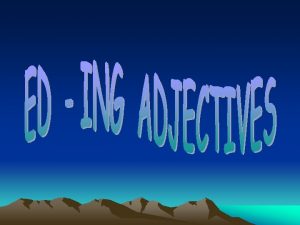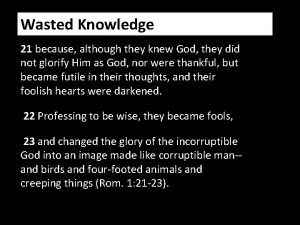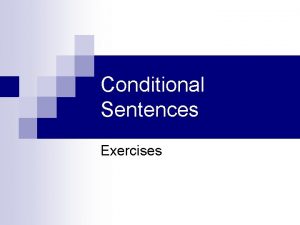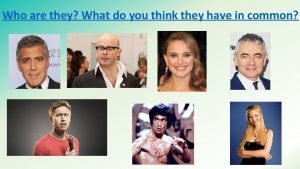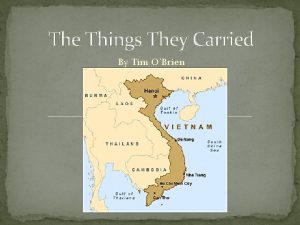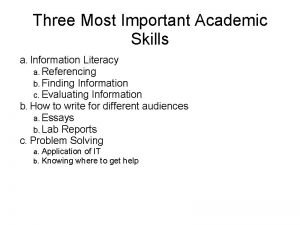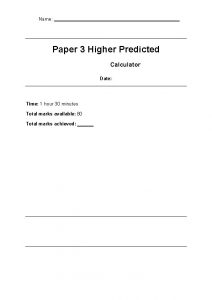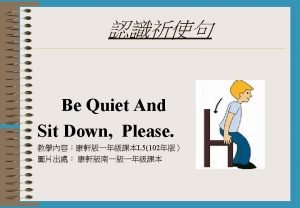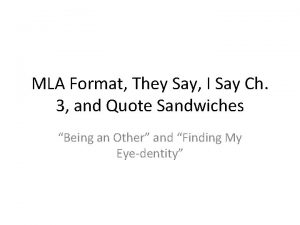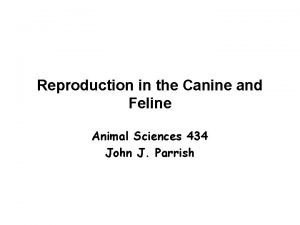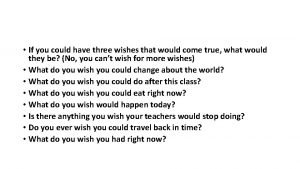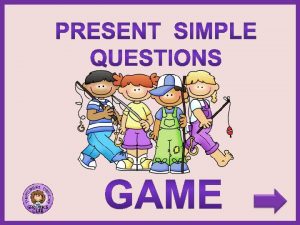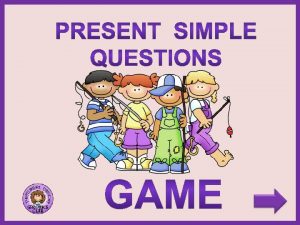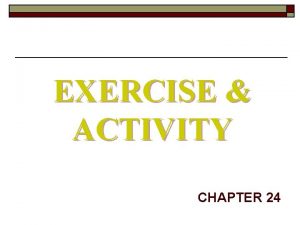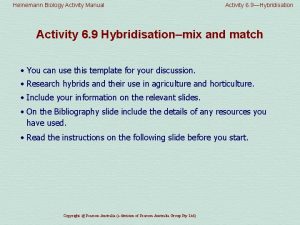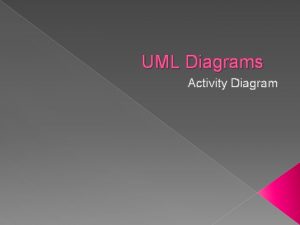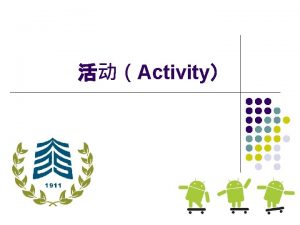ACTIVITY 2 4 HOW DO THEY DO IT





































![EXAMPLE • TLQ • [transition], For instance [lead in], in the magazine advertisement for EXAMPLE • TLQ • [transition], For instance [lead in], in the magazine advertisement for](https://slidetodoc.com/presentation_image/00330f957d4e64e3ec1a80b2923784fb/image-38.jpg)

- Slides: 39

ACTIVITY 2. 4: HOW DO THEY DO IT? ANALYZING ADS 7 th Grade Springboard

LEARNING TARGETS • I can identify techniques used in advertisements. • I can determine the purpose of persuasive advertisements and analyze how they use language to achieve that purpose. • I can write and expository response describing the effectiveness of advertising techniques in an advertisement.

DO ADVERTISERS TELL THE TRUTH? • Legally they have to. • Stretch the boundaries of the truth. HAVE YOU EVER PURCHASED A PRODUCT AND LATER FELT TRICKED? • Can you think of any claims made by advertisers that stretch the truth? • Why do advertisers stretch the truth?

NOTEBOOK Date 2. 4 Advertising Techniques pg.

AVANT-GARDE • Advertising technique that makes the product seem so new that you will be the first to have it.

BANDWAGON • Advertising technique that makes the product seem like everyone is buying it, so you feel like you need it too.

TESTIMONIALS • Advertisers use celebrities and regular people to endorse products.

FACTS AND FIGURES • Statistics, percentages, and numbers are used to convince you that the product is better than another.

TRANSFER • Advertisers use the background of the ad or the story of the commercial to associate good feelings with the product.

ADVERTISING TECHNIQUES 1. To understand how advertisers market to teens, it is important to understand the many persuasive advertising techniques they use to make people want to purchase their products. Read the descriptions of advertising techniques that follow. Then paraphrase and create a visual representation of each technique. Your visualization may include both words and symbols. • Bandwagon • Avant-Garde • Testimonials • Facts and Figures • Transfer

ADVERTISING TECHNIQUES 2. As you read about the techniques, think about the cause and effect relationship in advertising. For example, with bandwagon the persuasion may be that “Everyone is buying this product (cause), so you should buy this product, too (effect). ” With the avant-garde appeal, if might be “this product is the newest on the market (cause), and you should be one of the first to have it (effect). ”

Everyone else has it, so I should have it too!! Cool people have it, 1 st to have it, only SOME have it (sense of being special) People (normal or famous) say good things about product

Statistics and percentages. . . but… numbers can be misleading!! (25% of what? ? ? ) Connect good feelings with a product - feel emotions about a product

ADVERTISING TECHNIQUES 3. What advertising techniques might you see together in one ad? Why would they work well together to influence an audience?

Practice Your Vocabulary Words by Analyzing Ads for each of the following words: Testimonial Transfer Avante-garde Bandwagon Facts & Figures Here we go. . .

avant-garde & s t fac res u fig transfer & testimonial

facts & figures transfer testimonial

avant-garde w d an b ti s te l a i n o m n o ag

fac ts er f s n tra &f igu ba res e d r -ga nd wa g on t n a av

Practice Your Vocabulary Words by Analyzing Ads for each of the following words: Testimonial Transfer Avante-garde Bandwagon Facts & Figures

Practice Your Vocabulary Words by Analyzing Ads for each of the following words: Testimonial Transfer Avante-garde Bandwagon facts & figures It’s a secret. . . only the smart people know. . .

Practice Your Vocabulary Words by Analyzing Ads for each of the following words: Testimonial Transfer Avante-garde Bandwagon facts & figures

Practice Your Vocabulary Words by Analyzing Ads for each of the following words: Testimonial Transfer Avante-garde Bandwagon facts & figures

Practice Your Vocabulary Words by Analyzing Ads for each of the following words: Testimonial Transfer Avante-garde Bandwagon facts & figures

Practice Your Vocabulary Words by Analyzing Ads for each of the following words: Testimonial Transfer Avante-garde Bandwagon facts & figures

Practice Your Vocabulary Words by Analyzing Ads for each of the following words: being “different” or special Testimonial Only “certain” people Transfer do this Avante-garde Bandwagon facts & figures

ADVERTISING TECHNIQUES 4. As you look at print, online, or television advertisements, analyze the use of advertising techniques. Circle the advertising technique(s) used in the ads and provide evidence (elaboration) for each technique used. • 3 ads from 3 different brands. • Complete the graphic organizer. • Homework if not completed in class. • Due tomorrow first thing.

PENCIL AD!!!! • Please take out a pencil and grab a partner. • You will be assigned a specific ad technique. You will create a print ad to share with the class. The ad may have a slogan as well. • Due at the end of class. You present your ad first thing on Monday.

SKIP-- CHECK YOUR UNDERSTANDING • Think about an advertisement that you consider interesting and effective. You might consider if you or someone you know would buy this product based on the advertisement. Which persuasive technique does the advertiser use successfully? What is the cause-and-effect relationship being presented? Why do you think that particular technique was selected for the advertisement?

NOTEBOOK Date 2. 4 Vocabulary pg.

EXPLANATORY WRITING • Is a form of writing whose purpose is to explain or inform. • Topic Sentence • Transition • Supporting Information • Commentary • Concluding Statement

COHERENCE • The clear and orderly presentation of ideas in a paragraph or essay.

EXPLANATORY WRITING In contrast to a narrative, whose purpose is to tell as story, the primary purpose of explanatory/expository writing is to provide information or an explanation. Expository paragraphs follow a specific structure: • Topic Sentence • Transitions • Supporting Information • Commentary • Concluding Statement

NOTEBOOK Date 2. 4 Explanatory Prompt pg. 101 pg. _____

WRITING TO SOURCES: EXPLANATORY TEXT For the ad on the right, write a response to the chosen advertisement that explains how it tries to influence its target audience. Be sure to: • Introduce and develop your topic with relevant details/examples from the advertisement. • Use transitions, the precise language of advertising techniques, and formal style. • Include a concluding statement that supports

LANGUAGE AND WRITER’S CRAFT: REVISING FOR COHESION AND CLARITY Cohesion and clarity in writing refer to how ideas flow together. A way to write with cohesion and clarity is to use the TLQC format when writing a detail sentence. The TLQC format includes: • T: Transition word or phrase such as: • For example • According to, • To illustrate, • In this case, • In addition, • Most important, • Likewise, • Finally,

LANGUAGE AND WRITER’S CRAFT: REVISING FOR COHESION AND CLARITY Cohesion and clarity in writing refer to how ideas flow together. A way to write with cohesion and clarity is to use the TLQ format when writing a detail sentence. The TLQ format includes: • L– Lead in: The lead-in is usually a phrase that sets the context for the specific information that follows; it often answers the question Where? or When? • Q- Quote: A quote may be used to support the topic. The “quote” portion of the detail sentence does not always need to be a direct quote in quotation marks; it can be paraphrased material explaining the fact, detail, or example. • C-Cite: The author’s last name or the article title should be in parentheses (Kernan) or (“How Do They Do It? ”).
![EXAMPLE TLQ transition For instance lead in in the magazine advertisement for EXAMPLE • TLQ • [transition], For instance [lead in], in the magazine advertisement for](https://slidetodoc.com/presentation_image/00330f957d4e64e3ec1a80b2923784fb/image-38.jpg)
EXAMPLE • TLQ • [transition], For instance [lead in], in the magazine advertisement for Gatorade sports drink the ad uses the technique of testimonial by showing pictures of Major League Baseball player Derek Jeter holding up his fist of the fans and by including text under the picture stating [quote] “Gatorade has always been a part of Derek Jeter’s team”

PRACTICE Use TLQC to evaluate the writing you did for the Explanatory Writing Prompt, from yesterday, in your notebook. Revise to improve the lead-in, add quotations, add citations, or change/add transitions. Be prepared to share your changes.
 Grammar rules frustrate me they're not logical they are so
Grammar rules frustrate me they're not logical they are so They seek him here they seek him there
They seek him here they seek him there For they not know what they do
For they not know what they do You are not rejected
You are not rejected Although they knew god they did not glorify him
Although they knew god they did not glorify him Rankings: what are they and do they matter?
Rankings: what are they and do they matter? They are they which testify of me
They are they which testify of me If they have time at the weekend they will come to see us
If they have time at the weekend they will come to see us Activity 1 activity 2
Activity 1 activity 2 Activity coefficient
Activity coefficient Activity 2 plus and minus
Activity 2 plus and minus How to draw aoa network diagram
How to draw aoa network diagram Activity 1 activity 2
Activity 1 activity 2 Activity 1 introductory activity
Activity 1 introductory activity Reactants, products and leftovers
Reactants, products and leftovers They introduced me to her husband passive voice
They introduced me to her husband passive voice Rowan atkinson qualifications
Rowan atkinson qualifications Mitchell sanders the things they carried
Mitchell sanders the things they carried Syntax in the things they carried
Syntax in the things they carried They published leite derramado in 2009
They published leite derramado in 2009 Phoebe cary a legend of the northland
Phoebe cary a legend of the northland Most firms practice the selling concept when they face
Most firms practice the selling concept when they face Dilan gorur
Dilan gorur Where was jesus whipped
Where was jesus whipped When should hand antiseptics be used
When should hand antiseptics be used I, you they we she he it do does
I, you they we she he it do does In vain do they worship me
In vain do they worship me Evaporation
Evaporation What are study skills and why are they important
What are study skills and why are they important Liz buys packets of coloured buttons
Liz buys packets of coloured buttons Who are they?
Who are they? They died that we might live
They died that we might live Ocean currents map
Ocean currents map Look at the picture
Look at the picture The things they carried themes
The things they carried themes The day they parachuted cats into borneo food web
The day they parachuted cats into borneo food web They say i say quote sandwich
They say i say quote sandwich How long does a dogs heat last
How long does a dogs heat last Big apple boroughs
Big apple boroughs If i have three wishes they would be
If i have three wishes they would be
